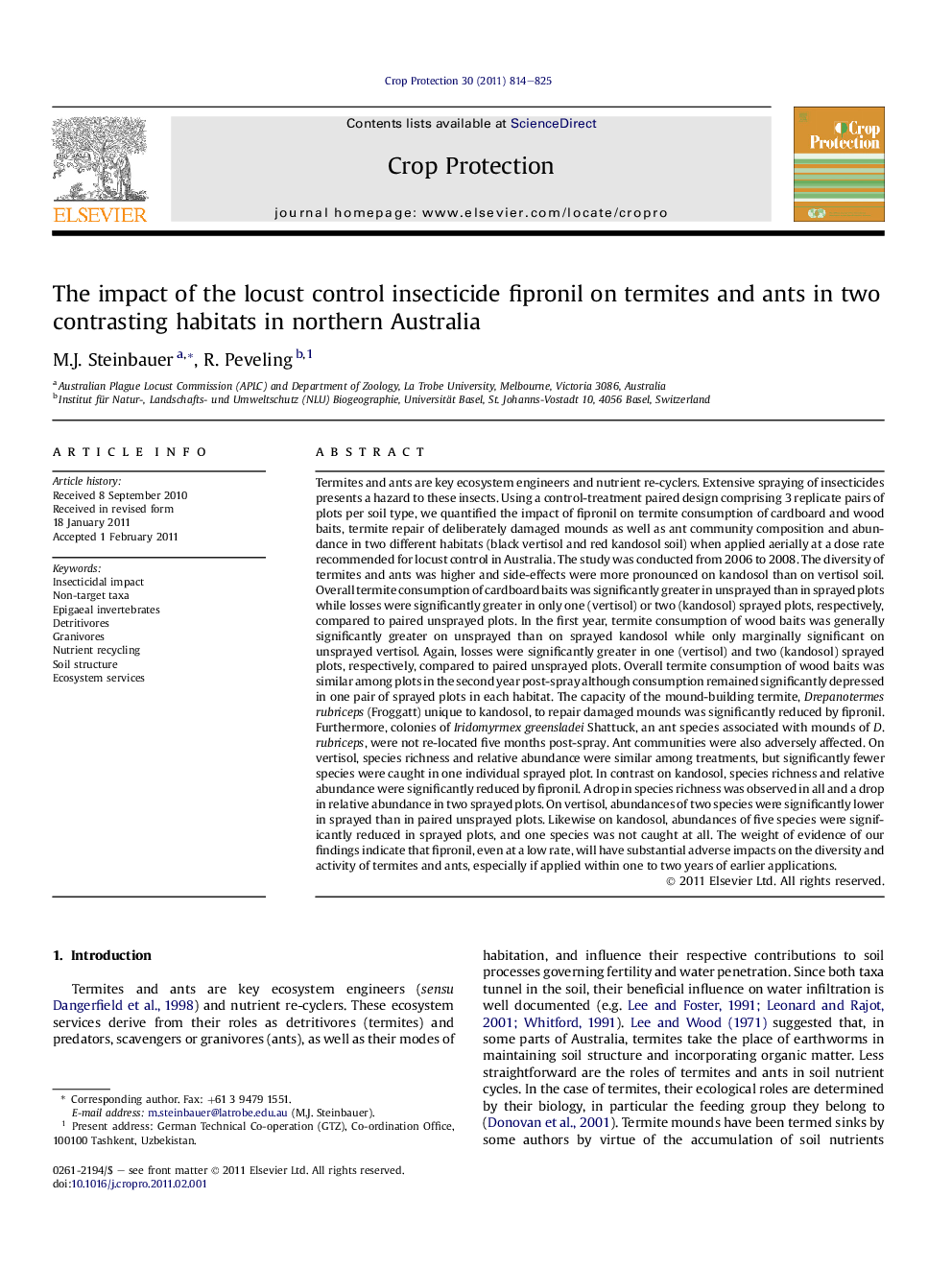| Article ID | Journal | Published Year | Pages | File Type |
|---|---|---|---|---|
| 4506866 | Crop Protection | 2011 | 12 Pages |
Termites and ants are key ecosystem engineers and nutrient re-cyclers. Extensive spraying of insecticides presents a hazard to these insects. Using a control-treatment paired design comprising 3 replicate pairs of plots per soil type, we quantified the impact of fipronil on termite consumption of cardboard and wood baits, termite repair of deliberately damaged mounds as well as ant community composition and abundance in two different habitats (black vertisol and red kandosol soil) when applied aerially at a dose rate recommended for locust control in Australia. The study was conducted from 2006 to 2008. The diversity of termites and ants was higher and side-effects were more pronounced on kandosol than on vertisol soil. Overall termite consumption of cardboard baits was significantly greater in unsprayed than in sprayed plots while losses were significantly greater in only one (vertisol) or two (kandosol) sprayed plots, respectively, compared to paired unsprayed plots. In the first year, termite consumption of wood baits was generally significantly greater on unsprayed than on sprayed kandosol while only marginally significant on unsprayed vertisol. Again, losses were significantly greater in one (vertisol) and two (kandosol) sprayed plots, respectively, compared to paired unsprayed plots. Overall termite consumption of wood baits was similar among plots in the second year post-spray although consumption remained significantly depressed in one pair of sprayed plots in each habitat. The capacity of the mound-building termite, Drepanotermes rubriceps (Froggatt) unique to kandosol, to repair damaged mounds was significantly reduced by fipronil. Furthermore, colonies of Iridomyrmex greensladei Shattuck, an ant species associated with mounds of D. rubriceps, were not re-located five months post-spray. Ant communities were also adversely affected. On vertisol, species richness and relative abundance were similar among treatments, but significantly fewer species were caught in one individual sprayed plot. In contrast on kandosol, species richness and relative abundance were significantly reduced by fipronil. A drop in species richness was observed in all and a drop in relative abundance in two sprayed plots. On vertisol, abundances of two species were significantly lower in sprayed than in paired unsprayed plots. Likewise on kandosol, abundances of five species were significantly reduced in sprayed plots, and one species was not caught at all. The weight of evidence of our findings indicate that fipronil, even at a low rate, will have substantial adverse impacts on the diversity and activity of termites and ants, especially if applied within one to two years of earlier applications.
► Fipronil is a broad-spectrum insecticide widely used for the control of locusts. ► Fipronil is used by the APLC but impacts to non-target insects were unknown. ► Fipronil affected termite activity, repair of termite mounds and abundances of ants. ► Effects were worst on (red kandosol) which supported more termite and ant species. ► Termite activity remained depressed for up to 26 months after spraying.
